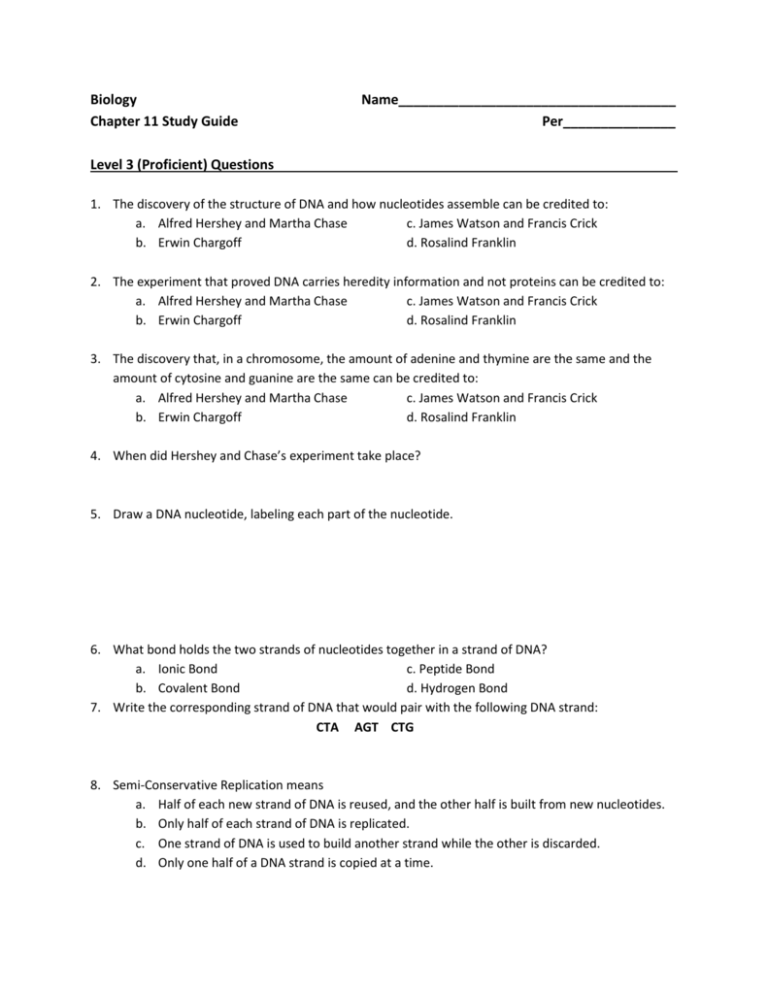Chapter 11 Study Guide
advertisement

Biology Chapter 11 Study Guide Name_____________________________________ Per_______________ Level 3 (Proficient) Questions 1. The discovery of the structure of DNA and how nucleotides assemble can be credited to: a. Alfred Hershey and Martha Chase c. James Watson and Francis Crick b. Erwin Chargoff d. Rosalind Franklin 2. The experiment that proved DNA carries heredity information and not proteins can be credited to: a. Alfred Hershey and Martha Chase c. James Watson and Francis Crick b. Erwin Chargoff d. Rosalind Franklin 3. The discovery that, in a chromosome, the amount of adenine and thymine are the same and the amount of cytosine and guanine are the same can be credited to: a. Alfred Hershey and Martha Chase c. James Watson and Francis Crick b. Erwin Chargoff d. Rosalind Franklin 4. When did Hershey and Chase’s experiment take place? 5. Draw a DNA nucleotide, labeling each part of the nucleotide. 6. What bond holds the two strands of nucleotides together in a strand of DNA? a. Ionic Bond c. Peptide Bond b. Covalent Bond d. Hydrogen Bond 7. Write the corresponding strand of DNA that would pair with the following DNA strand: CTA AGT CTG 8. Semi-Conservative Replication means a. Half of each new strand of DNA is reused, and the other half is built from new nucleotides. b. Only half of each strand of DNA is replicated. c. One strand of DNA is used to build another strand while the other is discarded. d. Only one half of a DNA strand is copied at a time. 9. What are three differences between DNA and RNA? 10. Name two differences between Replication and Transcription 11. Write the corresponding strand of RNA that would be transcribed onto the following DNA strand: TAC GTA CGA 12. Where would you most likely find mRNA? Where would you find tRNA? 13. Where do replication, transcription, and translation occur in the cell? 14. Name and describe the four types of chromosome mutations. 15. Why should you avoid things like asbestos or prolonged exposure to sunlight? 16. How do the cells prevent mutations from occurring? Level 4 (Distinguished) Questions 17. What are the base pairing rules for DNA? What are the base pairing rules for RNA? 18. What is the function of each of the three parts of the nucleotide? 19. Explain the steps of DNA replication. Include at least three separate, unique steps. 20. Explain the process of translation. Include at least three separate, unique steps. 21. Translate the following DNA strand into a protein sequence: TAC CCC AGA TCA GTC GTC AAA ACT 22. What is a point mutation? Give an example of a point mutation, and describe whether or not it will have an effect on a cell. 23. What is a frameshift mutation? Are these more or less severe than point mutations? Why?







